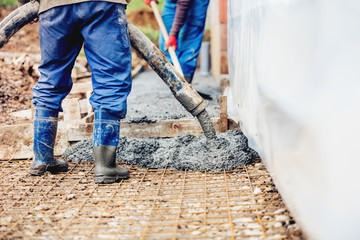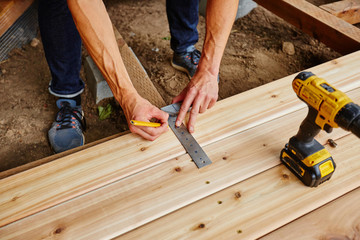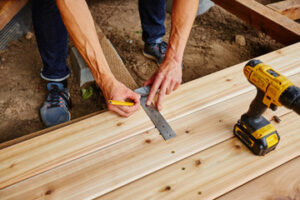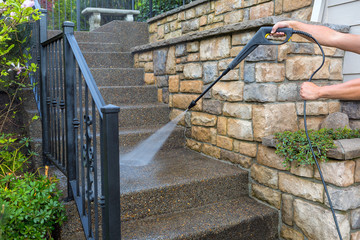Whether you are building foundations or replacing concrete parking lots, quality work requires professional attention. Choose a contractor that offers streamlined planning and accurate quantity take-offs.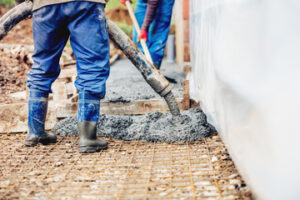
During the estimate process, ask contractors about their experience and references. Especially request examples of their work that are older than five years to gauge long term durability.
Those who excel as concrete contractors see their work as more than just a job; they view it as a craft that can transform raw materials into something enduring and durable. They understand that concrete is a building material that’s not only functional, but can also be artful and creative when applied properly.
As such, they are passionate about pursuing perfection on every project they undertake. Their skill set requires an attention to detail that ensures that even the most complex concrete installations can be executed precisely. It’s a commitment that can be seen in everything they do, from pouring foundations and laying slabs to finishing walls and decorating concrete structures.
Additionally, a strong passion for concrete construction drives these professionals to stay current with the latest innovations in the industry. They actively seek out training opportunities, read industry publications, and engage in other activities that help them stay up-to-date with best practices. This ability to keep learning is what ultimately makes them better at their craft. It’s what enables them to deliver the best quality for their clients.
Attention to Detail
Concrete Contractors work with a variety of materials, requiring the use of specific tools and equipment for proper installation. The quality of their work is based on their knowledge and familiarity with these products, as well as their ability to follow strict guidelines for each type of project. When evaluating potential contractors, ask to see their portfolios of previous jobs that demonstrate their craftsmanship and professionalism.
You can also request references from past clients to discuss their experience working with the contractor, such as timeliness, communication skills, and overall satisfaction. In addition to these personal references, it’s a good idea to read online reviews and check the concrete contractor’s website for testimonials.
A concrete job is a big investment, and you want to make sure that the contractor you hire has a solid track record of producing high-quality work. Ask to see their portfolio of previous projects and review online reviews to gauge the success of their work. Look for consistency in project results, such as a finished product that is well-leveled and smooth, with no bumps or dips.
Effective communication is crucial when selecting a Concrete Contractor to complete your project. A knowledgeable contractor will take the time to listen to your concerns and provide thoughtful responses that address your needs. On the other hand, if a contractor is unable to answer your questions or seems uninterested in your feedback, it may be time to move on.
It’s also important to consider how long a contractor has been in business when making your final decision. Those with years of experience are often more familiar with unforeseen challenges that may arise during a project and can apply their past experiences to prevent future problems.
Finally, make sure the concrete contractor you choose is licensed and insured. Ask for proof of liability and workers’ compensation insurance to ensure that you are protected in the event of an accident. They should also be willing to discuss their work method and any safety precautions they take while performing the task, as well as the steps they will take to protect your property from damage and debris.
Reliability
A reliable concrete contractor delivers results with precision detail, on-time delivery, and outstanding knowledge to tackle the most challenging projects. The right contractor will save homeowners from costly mistakes and delays, while improving construction efficiency and quality.
Homeowners can assess a contractor’s reliability by checking their credentials and reviewing past work. A professional with a long history of satisfied clients is more likely to deliver excellent results on residential concrete projects. It is also a good idea to ask friends and family for recommendations, as well as check public reviews on Google, Facebook, Yelp, Angi, and other online business directories.
Reputable contractors will follow best practices to ensure high-quality results, including proper mixing ratios and site preparation. They also adhere to industry standards when it comes to curing and finishing techniques, which contribute to longevity and durability. Homeowners can also rely on a qualified contractor to ensure that their project meets local codes and requirements for structural safety, environmental compliance, and permit approval.
Choosing the right contractor can seem like an overwhelming task when faced with so many options. To make the process easier, homeowners can use smart software tools to streamline planning and streamline quantity take-offs. For example, Tekla’s smart solutions empower concrete contractors to reduce risks and errors during the preconstruction stage with accurate 3D models optimized for concrete construction.
When searching for a concrete contractor, homeowners should look for experienced professionals that are willing to discuss their previous work and provide references on request. Those with extensive experience will bring to the table industry expertise gained from hundreds or even thousands of past projects. They will know the ins and outs of every aspect of concrete construction, which allows them to provide valuable insights tailored to each unique project.
A reliable contractor will keep their promises and be available to answer questions throughout the project. They will also provide a detailed schedule and budget upfront to ensure that the job is completed on time and within cost estimates. In addition, a skilled concrete contractor will be able to identify potential problems and resolve them quickly to avoid costly rework.
Accountability
Concrete projects entail highly technical details that require extensive knowledge and expertise. When hiring a contractor for such an important task, you want to ensure the concrete will be installed correctly the first time around. Skilled professionals know how to properly mix concrete, consider weather conditions, and use proper reinforcement techniques. This eliminates structural issues and saves homeowners from costly repairs down the road.
It is also crucial that a contractor understands the responsibilities of his job, which includes adhering to local codes and securing necessary permits before starting work on a project. These regulations ensure structural safety, protect the environment, and prevent fines from local authorities.
Contractors that are held accountable to these rules and standards can confidently handle any challenges that may arise on a project, such as unfavorable weather or unexpected changes to the original design. A contractor that is responsible and dependable can effectively communicate these challenges to the customer, offer solutions, and provide professional advice throughout construction.
You can check a contractors accountability by asking for references and visiting completed projects. A reputable contractor will be proud to show off his work and will have no problem providing you with testimonials from past customers. You can also look at a contractors website and social media to see how active they are and the quality of their work.
Lastly, you can also inquire about the types of warranties they offer for their services. A good concrete contractor will stand behind their work and will provide a warranty for both the material and labor. Ensure that the contract you sign states the duration and specifics of the warranty.
A solid concrete contractor will not only be competent at performing his job but will also strive to ensure that the finished product is of the highest quality. In addition, he will be committed to providing his clients with an excellent collaboration experience from start to finish.
